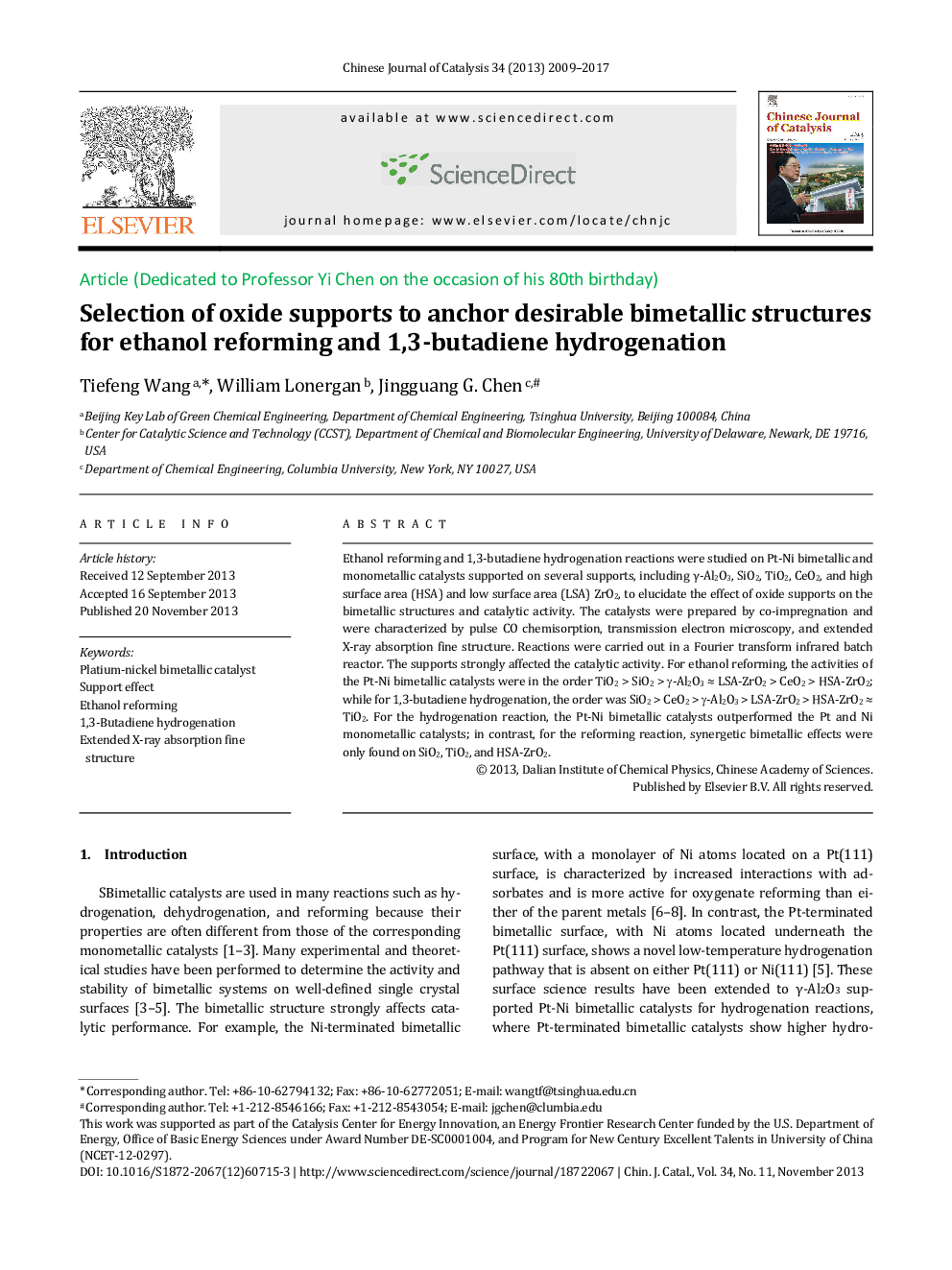| کد مقاله | کد نشریه | سال انتشار | مقاله انگلیسی | نسخه تمام متن |
|---|---|---|---|---|
| 59904 | 1419449 | 2017 | 9 صفحه PDF | دانلود رایگان |
Ethanol reforming and 1,3-butadiene hydrogenation reactions were studied on Pt-Ni bimetallic and monometallic catalysts supported on several supports, including γ-Al2O3, SiO2, TiO2, CeO2, and high surface area (HSA) and low surface area (LSA) ZrO2, to elucidate the effect of oxide supports on the bimetallic structures and catalytic activity. The catalysts were prepared by co-impregnation and were characterized by pulse CO chemisorption, transmission electron microscopy, and extended X-ray absorption fine structure. Reactions were carried out in a Fourier transform infrared batch reactor. The supports strongly affected the catalytic activity. For ethanol reforming, the activities of the Pt-Ni bimetallic catalysts were in the order TiO2 > SiO2 > γ-Al2O3 ≈ LSA-ZrO2 > CeO2 > HSA-ZrO2; while for 1,3-butadiene hydrogenation, the order was SiO2 > CeO2 > γ-Al2O3 > LSA-ZrO2 > HSA-ZrO2 ≈ TiO2. For the hydrogenation reaction, the Pt-Ni bimetallic catalysts outperformed the Pt and Ni monometallic catalysts; in contrast, for the reforming reaction, synergetic bimetallic effects were only found on SiO2, TiO2, and HSA-ZrO2.
For ethanol reforming, the Pt-Ni bimetallic catalyst activity is in the order TiO2 > SiO2 > γ-Al2O3 ≈ LSA-ZrO2 > CeO2 > HSA-ZrO2; while for 1,3-butadiene hydrogenation, the activity follows the trend of SiO2 > CeO2 > γ-Al2O3 > LSA-ZrO2 > HSA-ZrO2 ≈ TiO2.Figure optionsDownload as PowerPoint slide
Journal: Chinese Journal of Catalysis - Volume 34, Issue 11, November 2013, Pages 2009–2017
